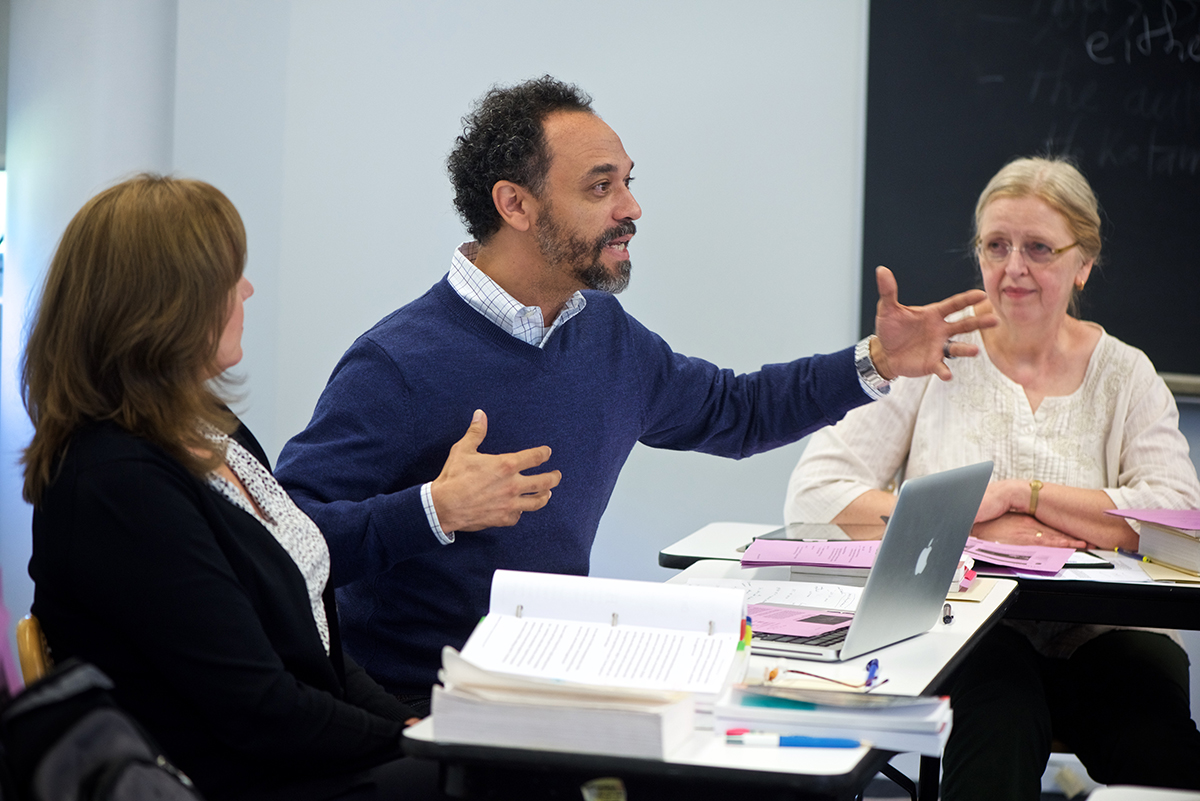The Interreligious Classroom

When I was in seminary training to be a Protestant pastor, in addition to the normal courses on Bible, theology, history, and the arts of ministry, I had the opportunity to experience an Ojibwa sweat lodge. I also undertook a research project to learn about the histories of the different Muslim communities in our city and listened to their fascinating stories. These learning experiences were evidently formative for me in my lifelong vocation of ministry and teaching, which has led me to Hartford Seminary. Since that time, the need for religious leaders with an awareness of and sensitivity to other religious communities has only become more important. The interreligious classroom is a key element to becoming an effective religious leader in our world today.
Preparing Leaders for a Multifaith World
Hartford Seminary is not training religious leaders for any one denomination or even one religious tradition, but we are preparing these leaders for the reality of our multifaith nation and world. Gathering students of different religious traditions in the same classroom at all stages of the curriculum is central to this method of graduate religious education.
Our curriculum is built on at least two premises.
- Interreligious encounter is the reality of our current nation and world. On Fridays, Saturdays, and Sundays, religious people gather with their own communities to deepen their relationship with God and find support from within — but, throughout the rest of the week they are living, working, and rubbing elbows with people of other religious traditions. We now live in a nation where the public nature of different cultures and religions is evident. American citizens make up a wonderful and religiously complex society. And, if we claim that we hold dearly the freedom of belief and worship, we must see that this right is held dearly by our neighbors, co-workers, and our own relatives who profess different faiths. These individuals or families belong to communities that are part of a larger civil society. Religiously minded folk who seek the common good in their local communities will inevitably find allies in other communities of faith or challenges from those communities in addressing public issues. Developing sensitivities and skills in being able to work along with other religious communities is a necessity.
- The interreligious classroom is an excellent place to learn what makes our own traditions and beliefs distinctive. It is one of the best places to learn what we believe. Unfortunately, it has often been assumed that interfaith work boils religion down to a least common denominator that will offend no one and provide feel-good moments, but little else. However, when done with true respect and humility, engaging in interreligious study together necessarily requires one to think carefully and respond clearly about how we find meaning in our own tradition. Each religious community has its own jargon and code language that intuitively provides guidance and comfort. For example, we may rely on the “grace” of God, or hear the “adhan,” or recite the “Shema.” These codes make sense to us because we embody these patterns intuitively when we gather for worship. Often, it is not until someone outside our tradition genuinely asks what we believe and why we act in certain ways that we must explain ourselves clearly. I don’t know how many times I have heard a student say, “No one ever asked me that before. I need to think about that.” It is the honest curious question from those outside our faith that will prompt us to learn more about ourselves and our understanding of God.
The interreligious classroom at Hartford Seminary is a place where students and faculty of different traditions study the same topics and disciplines together. We study the Hebrew Bible, the New Testament, and the Qur’an together, but from different perspectives. We examine Christian views of the Trinity together to better understand our own or another’s view of God. We learn the art of spiritual caregiving together to respond to the intrinsic needs of human beings. We explore the injustices of racism or the treatment of the “foreigner in our land” together (a common theme in the Abrahamic scriptures). We learn together as current and future religious leaders from different traditions who will be required to lead communities in a multireligious society. Religious leaders need to be able to communicate why their faith matters today and how their community contributes to the overall common good with others. This is why we teach and learn together in the interreligious classroom.
Our Master of Arts in Interreligious Studies program immerses students in the lived reality of religions and the relationships between different faiths, while deepening their knowledge of their own. Our students are able to specialize in Islamic Studies or Ministerial Studies, or complete the general degree program.
Tags: interreligious classroom, preparing leaders for a multifaith world
